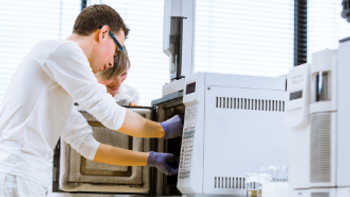
Advancements in GC–MS Applied to Detection of Volatile Organic Compounds in Breath for Cancer Diagnoses
Gas chromatography coupled to mass spectrometry (GC–MS) has been the gold standard in this application, but its limitations in differentiating cancer subtypes have led to the exploration of newer related technologies.
A new study in the journal Talanta has made an attempt to increase the accuracy and efficacy of methods based on gas chromatography coupled to mass spectrometry (GC–MS) for the purpose of analyzing breath volatile organic compounds (VOCs) as a component of cancer diagnosis (1).
Researchers Tien Le and Ronny Priefer, both of the Massachusetts College of Pharmacy and Health Sciences University in Boston, Massachusetts, USA, said interest in the study of VOCs remains top of mind for those in the medical field because mortality is still a main concern in the fight against cancer despite emerging changes in both diagnosis and treatment (1). VOCs, which are produced in the metabolism of healthy cells, have their metabolic processes altered by reactive oxygen species (ROS), itself linked to higher levels of oxidative stress, which increases the concentration of VOCs, according to the study.
The breath of humans and other animals emits volatile alkanes generated by ROS attacking molecules such as protein-producing lipid-free radicals and polyunsaturated fatty acids; this study cited another, from 2021, that reported a 97.6% cancer detection rate in breath and urine samples of a single dog (1). In this experiment, Le and Priefer sought to sample and analyze breath in a cost-effective, non-invasive, real-time manner, and compared several approaches based on GC–MS, including the basic GC–MS method which has been a gold standard, but has limitations in differentiating VOCs between various cancer subtypes.
Even with that, this type of VOC analysis is not mainstream. Blood samples, biopsies, and urinalysis all remain more common, but have disadvantages mostly related to the comfort of the patient. The researchers also sought more specific results. To that end, they tested and contrasted not only GC–MS, but also GC–MS assisted by solid-phase microextraction (SPME); selected ion flow tube-mass spectrometry (SIFT-MS); proton transfer reaction-mass spectrometry (PTR-MS); ion mobility spectrometry (IMS); and colorimetric sensors (1).
Unfortunately, the data in this study did not provide a clear frontrunner for a more precise chromatographic approach to breath analysis, though all methods showed promise. Key issues that arose included small sample size and lack of clinical trials employing these more updated methods (1). Also, the researchers suggested it could be possible to detect certain types of cancers more easily with one method over another, but so far, none have shown particular superiority. Therefore, they recommended expanding the sample size for each approach by encompassing a more diverse population of patients, in hopes of yielding more precise results.
Reference
(1) Le, T.; Priefer, R. Detection techniques of volatile organic compounds in the breath for cancer diagnoses. Talanta 2023, 265, 124767. DOI:
Newsletter
Join the global community of analytical scientists who trust LCGC for insights on the latest techniques, trends, and expert solutions in chromatography.




